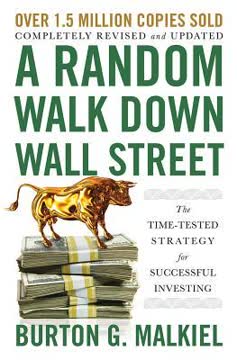Key Takeaways
1. The End of the Deflationary Era: A Seismic Shift in Global Economics
"The economic world as we know it—and the rules that govern it—are over."
Thirty years of disinflation have come to an end. The collapse of the Soviet Union in 1991 ushered in an era of globalization, leading to a sustained period of low inflation and falling interest rates. This environment fueled asset bubbles and encouraged risky investment behavior.
A new inflationary regime is emerging, driven by:
- Deglobalization and trade tensions
- Massive fiscal and monetary stimulus
- Supply chain disruptions
- Rising labor costs
- Increasing commodity prices
Investors must adapt to this new reality, as the strategies that worked in the past may no longer be effective. The shift from a deflationary to an inflationary environment will have profound implications for asset allocation and investment returns.
2. America's Debt Dilemma: The Perils of Unchecked Government Spending
"By the end of fiscal year 2014, it had climbed to $17.8 trillion—101 percent of GDP. For the first time since World War II, America owed more money than the economy produced."
The U.S. national debt has reached unprecedented levels, with potentially dire consequences for the economy and financial markets. The government's ability to service this debt is increasingly strained, especially in a rising interest rate environment.
Key concerns:
- Interest payments on the debt are crowding out other essential government spending
- The Federal Reserve's ability to respond to future crises is limited
- Foreign investors may lose confidence in U.S. Treasury securities
- Potential for a sovereign debt crisis if the situation is not addressed
This mounting debt burden could lead to higher taxes, reduced government services, or even more extreme measures like debt monetization, which would further fuel inflation.
3. The Rise of Hard Assets: Commodities and Value Stocks in an Inflationary World
"The great migration of capital, moving from growth stocks into value stocks, has only just begun."
Inflation favors tangible assets and companies with strong current cash flows over growth stocks and speculative investments. This shift is likely to persist for years, reversing the trends of the past decade.
Key beneficiaries:
- Commodities (gold, silver, copper, oil, etc.)
- Value stocks with strong balance sheets
- Real estate and infrastructure
- Companies in the energy and materials sectors
Investors should consider rebalancing their portfolios to increase exposure to these areas, while reducing allocation to high-growth, high-multiple stocks that have dominated in recent years.
4. The Dangers of Passive Investing: ETFs and the Misrepresentation of Market Risk
"Passive investors have not adequately measured the full scope of market risks; they buy mechanically based on quantitative models."
The rise of passive investing, particularly through ETFs, has created hidden risks in the financial system. While these products offer low fees and broad market exposure, they can also:
- Distort asset prices and valuations
- Create illusions of liquidity
- Amplify market volatility during periods of stress
The concentration of capital in a small number of large-cap stocks, driven by passive flows, has led to potential market fragility. Investors should be aware of these risks and consider a more active approach to portfolio management, especially in a changing macroeconomic environment.
5. Crypto's Cautionary Tale: The Psychology of Bubbles and Market Manias
"When Bubbles Burst: In the year 2020, right after the COVID-19 lockdowns began, Bitcoin started its monumental rally."
The cryptocurrency boom and bust exemplifies the psychological factors that drive market bubbles. Key elements include:
- Narrative-driven investing detached from fundamentals
- Fear of missing out (FOMO) and herd mentality
- Overconfidence and belief in a "new paradigm"
- Lack of regulation and oversight
While blockchain technology may have long-term potential, the speculative frenzy in cryptocurrencies serves as a reminder of the importance of critical thinking and risk management in investing.
6. The Decline of the Dollar: Geopolitical Tensions and the Future of Global Currency
"The weaponization of the dollar is seen from inside the Beltway as an effective way of winning a conflict without firing a gun. But the weaponization must be used sparingly—treated with the utmost respect."
The U.S. dollar's dominance as the world's reserve currency is facing challenges. Factors contributing to this potential decline include:
- Aggressive use of financial sanctions by the U.S.
- Rising government debt and monetary expansion
- Emergence of alternative payment systems and digital currencies
- Shifting global economic power dynamics
Investors should consider diversifying currency exposure and increasing allocation to assets that may benefit from dollar weakness, such as gold, commodities, and select foreign equities.
7. The Green Energy Paradox: Opportunities and Challenges in the Transition
"The West has created a demand crisis through its dream of unloading the internal combustion engine by the year 2035 and replacing it with the electric engine. But that's way too soon, according to our estimates."
The transition to green energy presents both opportunities and challenges for investors. Key considerations:
- Massive demand for critical minerals and metals
- Potential supply shortages and price spikes
- Geopolitical tensions over resource control
- Technological advancements and policy support
While the long-term trend towards renewable energy is clear, the path may be more complex and time-consuming than many anticipate. Investors should look for opportunities across the entire energy spectrum, including both traditional and renewable sources.
8. The Coming Commodity Boom: Critical Minerals for a Changing World
"There simply isn't enough copper and too much demand."
A new commodity supercycle may be emerging, driven by:
- Green energy transition (electric vehicles, renewable power)
- Infrastructure spending and urbanization in emerging markets
- Years of underinvestment in new mining projects
- Geopolitical tensions and supply chain reshoring
Key commodities to watch:
- Copper
- Lithium
- Cobalt
- Nickel
- Rare earth elements
Investors can gain exposure through commodity futures, mining stocks, or specialized ETFs focused on critical minerals and metals.
9. Nuclear Renaissance: Uranium's Role in the Future Energy Mix
"1 kilogram of this source of energy could keep that same bulb brightly lit, day and night, for 25,000 years. And it's called uranium."
Nuclear power is experiencing a resurgence of interest due to:
- Need for reliable, low-carbon baseload power
- Advancements in reactor technology and safety
- Growing recognition of nuclear's role in combating climate change
- Concerns about energy security and independence
The uranium market is tightening, with potential for significant price increases. Investors can consider uranium miners, ETFs, or even physical uranium trusts as ways to gain exposure to this trend.
10. Portfolio Construction for the Next Decade: Balancing Risk and Opportunity
"For investors, bubbles are an incredible opportunity to make money—as long as you recognize when the sell-off is no longer a buying opportunity."
Adapting to the new macroeconomic regime requires a rethink of traditional portfolio construction. Key considerations:
- Increase allocation to value stocks and hard assets
- Reduce exposure to long-duration growth stocks
- Incorporate commodities and precious metals as inflation hedges
- Consider active management to navigate increased volatility
- Maintain flexibility to adapt to changing market conditions
A suggested portfolio allocation:
- 40% stocks (with a tilt towards value and cyclicals)
- 30% bonds (shorter duration, inflation-protected)
- 20% commodities and precious metals
- 10% cash (for opportunistic deployments)
Investors should regularly review and rebalance their portfolios, remaining vigilant to emerging risks and opportunities in a rapidly changing global economy.
Last updated:
FAQ
What's How to Listen When Markets Speak about?
- Market Signals Focus: The book emphasizes understanding market signals and indicators to navigate the evolving economic landscape, highlighting a shift from a deflationary to an inflationary regime.
- Investment Strategies: It offers insights into new investment strategies, particularly focusing on hard assets like commodities and precious metals, as traditional approaches may no longer be effective.
- Historical Context: The book traces historical events, such as the collapse of Lehman Brothers, to explain the current economic order and market dynamics.
Why should I read How to Listen When Markets Speak?
- Expert Insights: Written by Lawrence McDonald, a seasoned Wall Street trader, the book provides expert insights into market behavior and investment strategies.
- Preparation for Change: It prepares readers for upcoming economic shifts, emphasizing the need to adapt to a new era of persistent inflation and geopolitical tensions.
- Practical Advice: The book includes practical advice on identifying investment opportunities in hard assets and avoiding pitfalls associated with passive investing.
What are the key takeaways of How to Listen When Markets Speak?
- Shift to Inflation: The book argues that the era of disinflation is over, and investors should prepare for sustained inflation, which won't return to past low levels.
- Value of Hard Assets: It highlights the importance of investing in hard assets like gold, silver, and commodities, expected to outperform traditional growth stocks.
- Listening to Market Signals: McDonald stresses the importance of understanding market signals through systemic risk indicators for informed investment decisions.
What are the best quotes from How to Listen When Markets Speak and what do they mean?
- "Sooner or later everyone sits down to a banquet of consequences.": This quote underscores the idea that every action in financial markets has consequences, urging investors to consider long-term effects.
- "The markets are speaking loudly and clearly; we just need to have ears to listen.": It emphasizes the need for investors to pay attention to market signals for better investment outcomes.
- "The end of the Cold War... ushered in a generational financial boom.": This reflects on how historical events shape economic conditions, highlighting the importance of understanding the past.
How does How to Listen When Markets Speak define passive investing?
- Strategy Overview: Passive investing replicates market indices rather than actively selecting stocks, gaining popularity for its perceived lower costs and simplicity.
- Market Share Growth: Passive investors now control at least 50% of all fund assets in America, raising concerns about market volatility and risk.
- Risks of Complacency: McDonald argues that passive investing can lead to a lack of awareness regarding market risks, creating vulnerabilities in the financial system.
What is the New Washington Consensus discussed in How to Listen When Markets Speak?
- Shift in Economic Policy: It refers to a shift from deflationary policies focused on globalization to inflationary policies emphasizing domestic production and labor rights.
- Impact on Inflation: This new consensus is expected to lead to higher inflation rates as governments increase spending and support for labor unions.
- Geopolitical Tensions: The consensus reflects growing geopolitical tensions and the need for countries to secure their energy and resource supplies.
How does How to Listen When Markets Speak address the concept of liquidity?
- Liquidity Importance: Liquidity is essential for financial markets, allowing asset transactions without significant price impact, typically correlating with lower volatility.
- Liquidity Crisis Examples: The book discusses events like the COVID-19 sell-off, where liquidity evaporated, leading to severe market disruptions.
- Investor Awareness: McDonald encourages investors to be mindful of liquidity conditions when making decisions, as understanding liquidity dynamics can help navigate risks.
What strategies does How to Listen When Markets Speak suggest for investing in hard assets?
- Focus on Value: McDonald advocates for value investing and hard assets, such as commodities and precious metals, as a hedge against inflation.
- Diversification: The book emphasizes diversifying investments across various hard assets to mitigate risk, including sectors like energy, mining, and agriculture.
- Long-Term Perspective: Investors are advised to adopt a long-term perspective, as hard asset markets can be volatile, requiring patience and strategic positioning.
How does How to Listen When Markets Speak relate to the current economic climate?
- Inflationary Pressures: The book discusses rising inflation rates and their impact on investment strategies, driving a shift towards hard assets and value stocks.
- Geopolitical Risks: McDonald highlights increasing geopolitical tensions and their potential effects on global markets, urging investors to consider these risks.
- Market Cycles: The author emphasizes entering a new market cycle with higher interest rates and inflation, crucial for adapting investment strategies.
What are the implications of the "endless bid" phenomenon in How to Listen When Markets Speak?
- Market Support Mechanism: The "endless bid" refers to continuous buying pressure from institutional investors, supported by central bank liquidity, inflating asset prices.
- Volatility Suppression: It tends to suppress market volatility, creating a false sense of security among investors, leading to increased risk-taking.
- Potential for Sudden Reversals: McDonald warns that when buying pressure subsides, it can lead to rapid market declines, requiring investor preparedness.
How does How to Listen When Markets Speak address the decline of the U.S. dollar?
- Weakening Dollar Outlook: McDonald predicts a decline in the U.S. dollar due to rising inflation and increasing government debt, impacting global markets.
- Impact on Investments: A weakening dollar will drive capital out of financial assets into hard assets like commodities and precious metals, requiring portfolio adjustments.
- Geopolitical Factors: Geopolitical tensions and potential shifts away from the dollar as a reserve currency could exacerbate its decline, affecting global trade dynamics.
What is the significance of demographic trends in How to Listen When Markets Speak?
- Aging Population Impact: The aging baby boomer population is shifting investment preferences from stocks to bonds and hard assets, affecting capital flows.
- Wealth Transfer: As baby boomers retire, wealth transfer to younger generations with different investment priorities could reshape market dynamics.
- Investment Strategy Adaptation: Investors need to adjust strategies based on demographic trends, understanding different age groups' preferences for informed decisions.
Review Summary
How to Listen When Markets Speak receives mostly positive reviews, with readers praising its insights into market dynamics and investment strategies. Many appreciate McDonald's analysis of shifting economic trends and his predictions for future market behavior. Some readers find the book's technical content challenging, while others value its blend of economics, politics, and history. Critics note excessive name-dropping and self-promotion. Overall, reviewers recommend it for investors seeking to understand current market risks and opportunities in a changing economic landscape.
Similar Books










Download PDF
Download EPUB
.epub digital book format is ideal for reading ebooks on phones, tablets, and e-readers.




